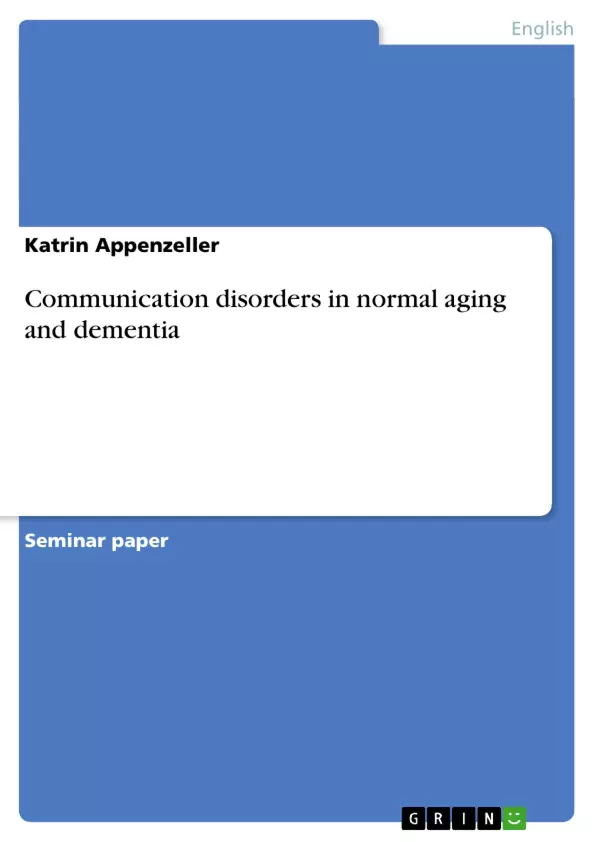People often do not like to think about the prospects of growing old although everybody will be affected and nobody can evade aging. Because of improved medical care, physical fitness and healthy nutrition the life expectancy of our world population increases. Hence there will be more elderly in the future than ever before. For a long time people wrongly associate aging with disease, and therefore this paper compares health aging with pathological aging, in this case dementia. Even the prevalence of syndromes such as dementia is dramatically increasing worldwide. Patients with dementia are the fastest growing neurobehaviorally disordered population and that is why the subject is very topical and interesting.
First of all the issues normal aging and dementia are explained separately. The different characteristics are investigated on several levels which are general facts, communication disorders and causes. Furthermore a comparison of both issues is given in order to emphasis the differences. As a result follows a conclusion.
Inhaltsverzeichnis (Table of Contents)
- Introduction
- Normal aging
- General facts
- Communication disorders
- Causes
- Dementia
- General facts
- Communication disorders
- Causes
- Differences
- Synopsis and Outlook
Zielsetzung und Themenschwerpunkte (Objectives and Key Themes)
This term paper aims to compare and contrast communication disorders in normal aging and dementia. It explores the characteristics of each, focusing on general facts, communication disorders, and causative factors. A comparative analysis will highlight the key differences between these two conditions.
- Communication changes associated with normal aging.
- Communication impairments characteristic of dementia.
- Distinguishing features between normal aging and dementia.
- The impact of aging on various aspects of language processing.
- Prevalence and societal implications of age-related communication disorders.
Zusammenfassung der Kapitel (Chapter Summaries)
The Introduction sets the stage by discussing the increasing elderly population and the importance of understanding the differences between normal aging and age-related diseases like dementia. The chapter on Normal aging first describes the general facts about aging and then focuses on communication disorders, noting that while some decline in certain cognitive functions can occur, overall communicative ability is largely preserved. The section on communication disorders within normal aging details specific areas of language, such as phonology, lexicon, and syntax, and how these are impacted by age. The chapter on Dementia is not summarized here to avoid spoilers.
Schlüsselwörter (Keywords)
Normal aging, dementia, communication disorders, language processing, cognitive decline, speech, aging, vocabulary, syntax, phonology, elderly.
- Arbeit zitieren
- Katrin Appenzeller (Autor:in), 2006, Communication disorders in normal aging and dementia, München, GRIN Verlag, https://www.grin.com/document/125644



